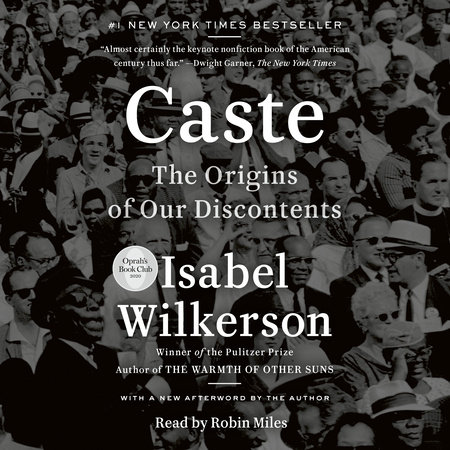Historical and Structural Oppression’s Impact on Health Equity
I’ve had the privilege of a world-class education focusing on our healthcare system and how to measure and evaluate healthcare quality and health outcomes, coupled with decades of work experience. However, despite my education and awareness about many inequalities that COVID-19 laid bare in recent years, I realized I did not profoundly comprehend how historical and structural oppression impact health equity (the state in which everyone has a fair and just opportunity to attain their highest level of health) and health equality (the differences, or disparities, in health outcomes between different groups).
Faced with this realization, I researched and read everything I could find written on the topic by well-respected historians. I learned a lot, including the realization that our health equity dashboards require more context than simply stratifying data by patients’ Social Determinants of Health (SDoH). They need additional validated context, so viewers don’t dismiss observed health disparities as “expected results.”
As a starting point to deepening your awareness about historical and structural oppression, here are two books I consider “must-read” and why I’m recommending them.
The Power Broker: Robert Moses and the Fall of New York, by Robert Caro
Robert Moses, New York City Park Commissioner, held power in New York state for 44 years (1934-1960), fully controlling, with no oversight of any kind, the building of bridges, parks, and public spaces, and (most significantly) 627 miles of roads and highways to reach them. The central thesis of this book cannot be mistaken — Moses’ purposeful design and construction for the benefit of a select group of people can be directly traced to many of the inequities other people, primarily people with low incomes and minorities, face today.
For example, Caro documents what happened when Moses slashed through a one-mile stretch of the East Tremont neighborhood to build the Cross-Bronx Expressway, leaving thousands of people nowhere to go in what looked like a bombed-out war zone.
In an interview, the author says, “The human tragedy caused by that one mile, out of all the miles that Moses created, was profound.” Moses termed these “slum clearance” projects, where he purposefully built roads and highways designed to clear the slums and place public housing in locations that cemented the division of the state by income, race, and class. Instead of clearing the slums and improving conditions for the more than 500,000 people, he created new slums.
Moses also built numerous bridges the author describes as “embodying racism in concrete.” For example, when Moses opened his Long Island parks during the 1930s, the only way for many poor people, particularly poor people of color, to reach them was by bus, so he purposefully built bridges over his parkways too low for buses to pass. And as Moses designed and built in New York, so followed other states nationwide.
Weighing in at over 1,000 pages, this Pulitzer Prize-winning and modern American classic biography of Robert Moses is well worth the commitment required to read it or, in my case, listen to it while walking the dog. It provides a depth of background and context about the historical and structural oppression we need to grasp if we wish to address health inequities meaningfully.
Caste: The Origins of Our Discontent, by Isabella Wilkerson
Caste is not an easy book to read, and in some places, it reduced me to tears. But it is a profoundly important book and one that I recommend highly.
Wilkerson, who won a Pulitzer Prize for national reporting while at The New York Times and whose previous book, “The Warmth of Other Suns: The Epic Story of America’s Great Migration,” won the National Book Critics Circle Award (and whom some of you may remember as the keynote speaker at the American Hospital Association’s Health Equity Conference earlier this year), avoids words like “white” and “race” and “racism” instead using terms like “dominant caste,” “favored caste,” “upper caste” and “lower caste.”
In framing the narrative using these terms, Wilkerson is not conflating race and caste but arguing that they, as she explains, “can and do coexist in the same culture and serve to reinforce each other. Race in the United States is the visible agent of the unseen force of caste. Caste is the bones, race, the skin.”
A caste system, she writes, is “an artificial construction, a fixed and embedded ranking of human value that sets the presumed supremacy of one group against the presumed inferiority of other groups on the basis of ancestry and often immutable traits, traits that would be neutral in the abstract but are ascribed life-and-death meaning.” She observes that caste “is about respect, authority, and assumptions of competence — who is accorded these and who is not.”
Caste is a complicated book, but Wilkerson makes it accessible through carefully crafted examples that make it easy to understand how our history, politics, and policies reinforce the social order in the United States (and other countries) — a social order that benefits select groups or castes and disenfranchises others. The history, politics, and policies that contribute to the inequalities we observe in our healthcare delivery and health outcomes.
In Summary
Admittedly, reading (or listening) to these books first requires an interest in learning more about how historical and structural oppression impact health equity and equality, and second a commitment of something we all have too little of — time. But I encourage you to consider diving in because the perspective and knowledge you will gain is critical to creating solutions that address the root causes of the problems and people who need our help the most.

